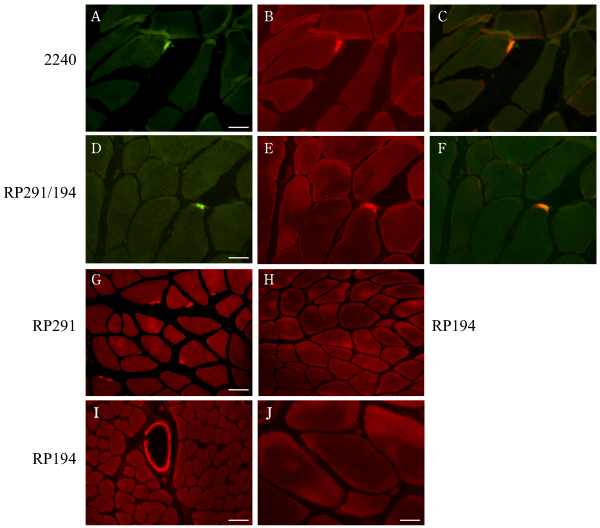Figure 2.
Immunolocalization of CAR to the neuromuscular junction in human skeletal muscle. Frozen sections of human muscle were incubated with Alexa Fluor-conjugated α-bungarotoxin and antibodies to CAR as described in Materials and Methods. Panels A and D show α-bungarotoxin staining of acetylcholine receptors at neuromuscular junctions (green). Panel B shows immunofluorescent staining of the section in panel A with a polyclonal antibody (ab 2240) to the extracellular domain of CAR (red). Panel E shows immunofluorescent staining of the section in panel D with a mixture of the isoform-specific C-terminal antibodies RP194 and RP 291 (red). Panel C is a merge of panels A and B. Panel F is a merge of panels D and E. These merges [C, F] show that CAR colocalizes with α-bungarotoxin at neuromuscular junctions (in yellow). Of the two C-terminal antibodies, only RP291 (G) demonstrates the typical neuromuscular junction staining while signal is absent when sections are incubated under similar conditions with RP194 (H) although RP194 does label blood vessels (I). Sections incubated with secondary antibody alone did not reveal any signals (J). Bar = 25 μm (A, D); 50 μm (G, I).

